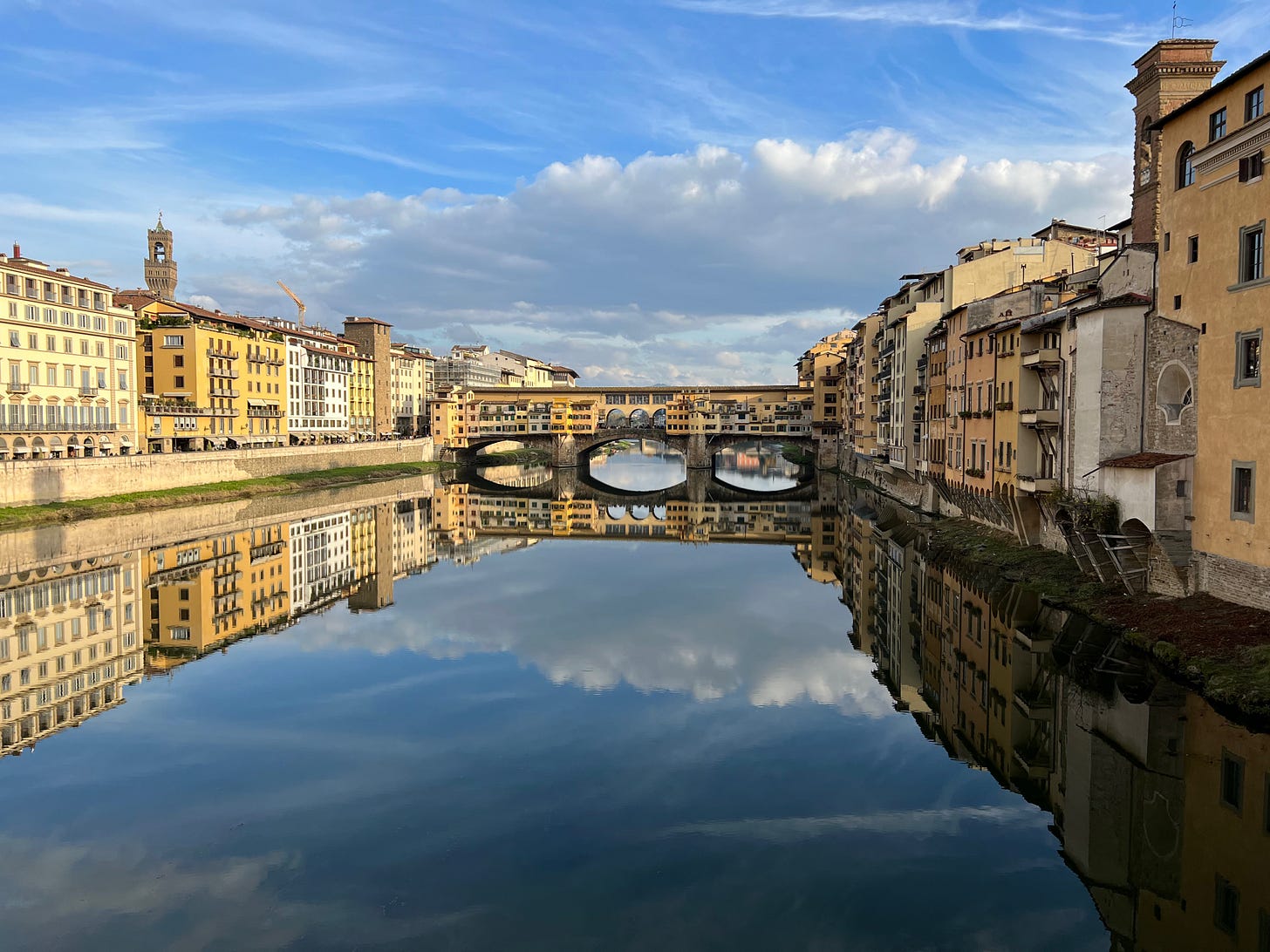The Way To the Heart Is Through the Fourth Stomach
Great art and tripe in Florence
I reeled for months after the unexpected death of my father. Being overwhelmed by grief bashes your heart around, but it can also leave you wide open to great beauty. So in November I went to Florence, where beautiful things exist in stupefying abundance, hoping I could transform my sadness into wonder. I knew a Botticelli painting could take me there, but among the many beautiful things of Florence, tripe was not an obvious one.
Lampredotto is a most inelegant signature dish for one of the world’s most sumptuous cities. Michelangelo’s “David,” and Brunelleschi’s red brick dome are monuments of Florence’s glory period, while lampredotto, a cow’s fourth stomach, tells the story of the very hard work done by everyone else. The name likely originates from lampreda, the Italian word for lamprey eels, once a similarly textured delicacy of the Renaissance elite. You see the Florentine aristocracy peering out at you from the most famous frescoes — ancient yet strangely familiar faces.
Twenty years ago when I lived in Florence, I never touched tripe, but in my search for awe and wonder I found myself drawn to the cheerful tripe vendors and the pageant of lunchtime in an otherwise serious city.
“Trippa hon harciofi,” calls out the sandwich maker at Tripperia Pollini just around the corner from the San Ambrogio food market. For all the talk of Dante in Florence and their most perfect version of the Italian language, at the tripe trucks you hear the accent of real Florentines that exchanges a hard “c” for a soft “h.”
He surveys the crowd then holds up one hand to visually push all those waiting for lampredotto to one side of the cart. His line is for today’s special — the more common honeycomb tripe with carciofi (artichoke). Almost everyone slides to the left for the lampredotto.
On either side of their truck are little lunch counters protected by plastic tarps. I would sit there and watch the trippaio at work, slicing open dense rolls to dip into the meat’s broth, then carefully chopping the lampredotto so that is has the texture of thinly sliced roast beef. The final move is a ladle full of the most delicious salsa verde made from parsley, anchovies, capers, olive oil, and day old bread. For an extra two euros you can get a plastic cup of vinaccio — a very rustic red wine wine poured from straw covered fiasco bottle.
Why was I suddenly so fascinated by tripe? I needed love, and tripe cannot be made delicious without love…that ephemeral, impossible to quantify but you-know-it-when-it’s-missing ingredient that is best illustrated by tripe. To take what would be discarded and give it the attention required to transform its terrible texture and lack of flavor can only be done with affection.
During those November weeks I saw the Uffizi Galleries again without the massive pre-Covid crowds of tourists that can blur the experience. I climbed the steps of San Miniato al Monte to listen to the monks chant the evening vespers, and stood in a crowd gasping at the sight of the Ponte Vecchio perfectly reflected in the Arno. And at least three times a week I sat on a cold marble bench in the middle of the cobblestone street, surrounded by ancient palazzi, with a lampredotto sandwich. Upon the first bite, the world around me stayed gray while I slowly felt colored in.







I loved reading this. I felt right there with you on that cold bench, even though the last time I visited Florence it was a sweltering pre-COVID July, which definitely takes away some of the magic, but not all. My mom used to make tripe stewed in tomatoes, which my sister and I called "worms" when we were kids but ate quite happily. I have to admit I lost my taste for it some time ago, but your description of the panino makes me curious to try it again.
Thank you for taking me back to Florence and my first (and only) experience with Lampredotto. Having grown up in Mexico, I'm not a stranger to tripe, but can't say it's ever been my favorite. I'm still pretty proud of myself for going right up to the cart and ordering (and finishing) my panino on my very first trip to Florence in college. Many years later, I went back again with my now husband (Noah) and he quickly devoured one. He's the one that always eats tripe and tongue here in Mexico (I'm a little more hesitant hehe).